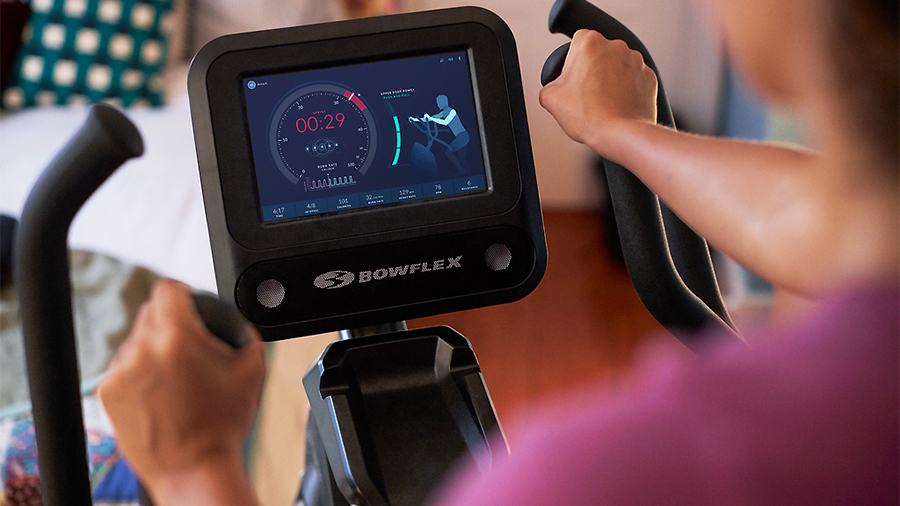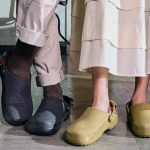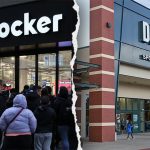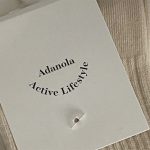Nautilus, Inc. posted a net loss in the third quarter, which ended December 31, as sales fell 21.7 percent, excluding sales related to the sold Octane brand. Sales were up 63 percent against the 2019 third quarter.
Management Comments
“Our overall third-quarter performance underscores the continued momentum of our multiyear strategy to transform Nautilus into the leading digitally-enabled at-home fitness company. While we are still in the early innings of our digital transformation, engagement has outpaced our initial expectations, and we expect JRNY memberships to cross 300,000 by fiscal year-end. Our broad product portfolio of strength and cardio products and enhanced digital offering continues to resonate with consumers, highlighted by our record-setting number of shipments during the third quarter,” said Jim Barr, Nautilus, Inc. CEO.
Barr continued, “I am confident that Nautilus is well-positioned to succeed within the ‘new normal’ of the at-home fitness industry that includes a more predictable baseline of consumer demand that is significantly above pre-pandemic levels. We have taken decisive action over the past two years to optimize our product portfolio and transform our cost base to enhance our operating flexibility. These operating initiatives, combined with the acceleration of our JRNY platform, will ultimately enable us to capture the tremendous long-term market opportunity. Looking ahead, we will continue to prudently invest in marketing and software development capabilities to advance our digital transformation. Our YTD progress on North Star keeps us on track to deliver a sustainable operating margin target of 15 percent by fiscal year-end 2025, with margins expanding to high teens by fiscal year-end 2026.”
Total Company Results
Fiscal 2022 Third Quarter Ended December 31, 2021 Compared To December 31, 2020
- Net sales were $147.3 million, compared to $189.3 million, a decline of 22.2 percent versus last year, or down 21.7 percent excluding sales related to the Octane brand, which was sold in October 2020. Net sales are up 63 percent, or a 28 percent CAGR, when compared to the same period in 2019, excluding Octane. The lower demand of its cardio products was partially offset by strength in sales of its SelectTech weights and benches compared to the same period in 2020.
- Gross profit was $29.9 million, compared to $77.9 million last year. Gross profit margins were 20.3 percent compared to 41.1 percent last year. The 20.8 ppt decrease in gross margins was primarily due to increased product costs, logistics and discounting (-18 ppts) and increased investments in JRNY (-3 ppts).
- Operating expenses were $49.2 million, an increase of $12.8 million, or 35.3 percent, compared to last year, primarily due to $11.0 million more in advertising and a $3.6 million increase in JRNY investments. Total advertising expenses were $21.5 million versus $10.5 million last year.
- Operating loss was $19.3 million, or a negative 13.1 percent operating margin, compared to operating income of $41.5 million last year, primarily due to lower gross profit and higher operating expenses.
- Loss from continuing operations was $13.5 million, or $(0.43) per diluted share, compared to income of $29.3 million, or $0.90 per diluted share, last year.
- Net loss was $13.5 million, or $(0.43) per diluted share, compared to net income of $28.9 million, or $0.89 per diluted share, last year.
- The effective tax rate was 34.2 percent this year compared to 22.7 percent last year, primarily due to the impact of the lower income.
The following statements exclude the impact of acquisition and other related costs for the three months ended December 31, 2021.
- Adjusted operating expenses were $48.6 million, or 33.0 percent of sales, compared to $36.4 million, or 19.2 percent of sales, last year. The increase was driven by advertising and JRNY investments.
- Adjusted operating loss was $18.7 million compared to last year’s income of $41.5 million, driven by lower gross profit and higher adjusted operating expenses.
- Adjusted EBITDA loss from continuing operations was $14.8 million compared to income of $44.9 million last year.
Nine-Months Ended December 31, 2021 Compared To Nine-Months Ended December 31, 2020
- Net sales were $469.8 million up 2.4 percent compared to $458.8 million last year. Excluding sales related to the Octane brand, net sales were up 6.8 percent compared to last year and up 144 percent, or a 56 percent CAGR, when compared to nine months ended December 31, 2019. The sales increase compared to the same period in 2020 was driven primarily by strength in sales of its SelectTech weights and benches.
- Gross profit was $127.5 million compared to $193.2 million last year. Gross profit margins were 27.1 percent compared to 42.1 percent last year. The 15 ppts decrease in gross margins was primarily due to increased product costs, logistics and discounting (-13 ppts) and increased investments in JRNY (-2 ppts).
- Operating expenses were $130.9 million, an increase of $16.0 million, or 14.0 percent, compared to $114.8 million last year, primarily due to $23.5 million more in advertising, increased JRNY investments of $9.5 million, a legal settlement of $4.7 million and acquisition expenses of $1.7 million, partially offset by last year’s $20.7 million Octane Loss on Disposal Group. Total advertising expenses were $44.3 million compared to $20.9 million last year.
- Operating loss was $3.4 million compared to income of $78.4 million last year. The decrease was primarily due to lower gross profit and higher operating expenses, partially offset by the Octane Loss on Disposal Group.
- Net loss was $4.2 million compared to income of $57.7 million last year.
The following statements exclude the impact of the legal settlement, acquisition and other related costs for the nine months ended December 31, 2021 and loss on disposal group for the same period in 20201.
- Adjusted operating expenses were $124.5 million, or 26.5 percent of sales, compared to $94.2 million, or 20.5 percent of sales, last year. The increase was driven by $23.5 million of advertising and JRNY investments.
- Adjusted operating income decreased to $2.9 million compared to last year’s $99.0 million, driven by lower gross margins and higher operating expenses.
- Adjusted EBITDA from continuing operations was $13.5 million compared to $108.8 million last year.
JRNY Update
- Nautilus, Inc. continues to enhance its JRNY platform, creating a differentiated connected-fitness experience for its members.
- In the third quarter, the company expanded the JRNY enabled product line, adding the Bowflex Max Total 16 and Bowflex SelectTech 552 and 1090 dumbbells.
- The attachment of JRNY to the Bowflex SelectTech modalities has been a growth driver for the JRNY member base, which reached nearly 250,000 members as of December 31, 2021.
- The company extended JRNY to include whole-body workouts, including FitOn and strength videos on demand for members to track workouts across strength, cardio and whole-body.
- Year-to-date, the company added more than 150 locations to its Explore the World and continues to add new trainer-led videos to the platform.
- The company began offering 12-month complimentary trial memberships in late September and requested feedback on from users’ experience over a longer term.
- The company launched JRNY.com, subscription management and billing platform, establishing a browser-based portal for customers to manage their membership and interact with JRNY. The subscription platform includes payment confirmation, payment refunds, subscription changes and cancellations, and trial ending and renewal reminders.
Segment Results | Fiscal 2022 Third Quarter Ended December 31, 2021 Compared to December 31, 2020
Direct Segment
- Direct segment sales were $60.7 million, compared to $82.2 million, a decline of 26.1 percent versus last year and up 69 percent, or a 30 percent CAGR, compared to the same period in 2019. Net sales decrease was primarily driven by lower cardio sales and higher sales discounting.
- Cardio sales declined 32.8 percent versus last year and were up 20 percent, or a 9 percent CAGR, compared to the same period in 2019. Lower sales were primarily driven by lower bike demand. Strength product sales declined 14.1 percent versus last year and increased 305 percent, or a 101 percent CAGR, compared to the same period in 2019. Lower sales this quarter were primarily driven by lower sales of its Bowflex Home Gyms, partially offset by increased sales of SelectTech weights and benches.
- The Direct segment ended the quarter with $8.8 million of backlog as of December 31, 2021, the first quarter with a meaningful backlog since March 31, 2021. These amounts represent unfulfilled consumer orders net of current promotional programs and sales discounts.
- Gross profit margin was 29.8 percent versus 53.6 percent last year. The 23.8 ppt decrease in gross margin was primarily driven by increased product costs, logistics and discounting (-20 ppts) and increased investments in JRNY (-4 ppts). Gross profit was $18.1 million, down 58.8 percent versus last year.
- Segment contribution loss was $9.0 million, or 14.8 percent of sales, compared to income of $23.6 million, or 28.7 percent of sales last year. The decline was primarily driven by lower gross profit and increased investments in media and JRNY. Advertising expenses were $16.1 million compared to $10.5 million last year.
Retail Segment
- Retail segment sales were $85.7 million, down by 19.4 percent versus last year. Excluding sales related to Octane, net sales were down 18.5 percent compared to last year and up 60 percent, or a 26 percent CAGR, compared to the same period in 2019. Retail segment sales outside the United States and Canada were down 22 percent versus last year. Excluding sales related to Octane, net sales outside the United States and Canada were down 20 percent and up 95 percent, or a 40 percent CAGR, compared to the same period in 2019. The decrease in sales is primarily driven by lower cardio sales and higher sales discounting, partially offset by strong sales of SelectTech weights and benches.
- Cardio sales declined by 52.5 percent versus last year. Excluding sales of the Octane brand, cardio sales were down 51.7 percent compared to last year, and up 6 percent, or a 2 percent CAGR, compared to the same period in 2019. Lower sales this quarter were primarily driven by lower bike sales. Strength product sales grew by 72.8 percent versus last year, and were up 164 percent, or a 62 percent CAGR, compared to the same period in 2019, led by the popular SelectTech weights and benches.
- As of December 31, 2021, the Retail segment’s backlog totaled $44.2 million compared to $178.6 million as of March 31, 2021. These amounts represent customer orders for future shipments and are net of contractual rebates and consideration payable to applicable Retail customers.
- Gross profit margins were 12.8 percent compared to 31.1 percent last year. The 18.3 ppt decrease in gross margin was primarily driven by increased product costs, logistics and discounting (-17 ppts) and increased investments in JRNY (-1 ppt). Gross profit was $11.0 million, a decrease of 67 percent versus last year.
- Segment contribution income was $3.3 million, or 3.8 percent of sales, compared to $25.3 million, or 23.8 percent of sales, last year. The decline was primarily driven by lower gross profit.
Comparison Of Segment Results For The Nine-Month Period Ended December 31, 2021 To The Nine-Month Period Ended December 31, 2020
Direct Segment
- Net sales, for the nine-month period ended December 31, 2021, were $162.0 million, down 16.4 percent versus last year and up 122 percent, or a 49 percent CAGR, compared to the same period in 2019. Decreased sales this year were driven primarily by cardio products, which declined by 37.4 percent versus last year due to lower sales of bikes. Strength product sales grew 42.1 percent versus last year, driven by SelectTech weights and benches.
- Gross profit margin, for the nine-month period ended December 31, 2021, was 34.9 percent, down from 55.0 percent last year. The 20.1 ppt decrease in gross profit margin was primarily driven by: increased product costs, logistics and discounting (-17 ppts) and increased investments in JRNY (-3 ppts). Gross profit was $56.6 million, a decrease of 46.9 percent versus last year.
Retail Segment
- Net sales, for the nine-month period ended December 31, 2021, were $305.3 million, up 16.4 percent versus last year. Excluding sales related to Octane, net sales were up 25.5 percent versus last year, and up 159 percent, or a 61 percent CAGR compared to the same period in 2019. Retail segment sales outside the United States and Canada were up 22 percent versus last year. Excluding sales related to Octane, net sales outside the United States and Canada were up 33 percent versus last year and up 241 percent, or an 85 percent CAGR, compared to the same period in 2019.
- Cardio sales were down 6.6 percent versus last year, driven primarily by lower bike sales. Strength sales were up 88.8 percent versus last year, driven primarily by SelectTech weights and up 205 percent, or a 75 percent CAGR, compared to the same period in 2019.
- Gross profit margin, for the nine-month period ended December 31, 2021, was 22.4 percent, down from 32.0 percent last year. The 9.6 ppt decrease in gross profit margin was primarily driven by increased product costs, logistics and discounting. Gross profit was $68.4 million, a decrease of 18.7 percent versus last year.
Balance Sheet And Other Key Highlights As Of December 31, 2021
- Cash and Liquidity
- Cash, cash equivalents, and restricted cash were $19.7 million, compared to cash, cash equivalents, restricted cash and available-for-sale securities of $113.2 million as of March 31, 2021. The decrease was primarily due to the strategic decision to increase on-hand inventory for the fitness season and the acquisition of VAY AG.
- Debt and other borrowings were $55.8 million compared to $13.3 million as of March 31, 2021.
- $54.9 million was available for borrowing under the Wells Fargo Asset Based Lending Revolving Facility (“Facility”) compared to $54.4 million as of March 31, 2021.
- Cash, cash equivalents, and restricted cash were $19.7 million, compared to cash, cash equivalents, restricted cash and available-for-sale securities of $113.2 million as of March 31, 2021. The decrease was primarily due to the strategic decision to increase on-hand inventory for the fitness season and the acquisition of VAY AG.
- Inventory was $128.1 million, down from $162.7 million as of September 30, 2021, but up compared to $68.1 million as of March 31, 2021. The increase in inventory versus year-end is driven by the strategic decision to increase on-hand inventory levels ahead of the fitness season given the continued disruption in global logistics. About 15 percent of inventory as of December 31, 2021, was in transit.
- Trade receivables were $93.6 million, compared to $88.7 million as of March 31, 2021. The increase in trade receivables was due to the timing of customer payments.
- Trade payables were $61.9 million, compared to $98.9 million as of March 31, 2021. The decrease in trade payables was primarily due to the timing of payments for inventory.
- Capital expenditures totaled $9.1 million for the nine months ended December 31, 2021.
Forward-Looking Guidance | Second Half Fiscal 2022
- Given the effect of the COVID-19 pandemic on last year’s second-half sales and to gauge growth and progress against more “normalized” results, the company said it would measure this year’s sales versus the same period two years ago for the next few quarters. And because fitness season straddles the last two quarters of the year, the company believes it is prudent to consider results on a six-month basis from October 1, 2021 to March 31, 2022.
- The company now expects total company net sales in the second half of Fiscal 2022 to be between $260 million and $280 million, an increase of 31 percent to 41 percent versus the same period in 2020. The decline versus previous guidance is driven by lower demand in International and increased promotional activity in the U.S. and Canada in this fiscal year’s fitness season.
- The company expects the impact of increased logistics, product costs and discounting to decline operating margins by 15-to- 16 percentage points, 3-to-4 percentage points worse than previous guidance. The change is primarily due to the more promotional environment as mentioned above.
- The company expects investments in JRNY and in marketing to increase versus the same period last year. As a rate of sales compared to last year, overall investments in JRNY will be 6-to-9 percentage points higher, and advertising spend will be 8-to-9 percentage points higher.
- As previously guided, for the second half of fiscal 2022, the company expects operating margin loss in the mid-teens.
- For the second half of fiscal 2022, the company expects adjusted EBITDA loss in the low-teens.
- The company is reiterating full-year capital expenditures to be between $12 million and $14 million with the majority earmarked for JRNY investments.
- The company expects the number of JRNY members at year-end to exceed 300,000 slightly above the mid-point of its previous guidance.
Longer-Term View Beyond Fiscal 2022
The company expects to return to positive adjusted EBITDA in fiscal year 2023 and is on track to achieve operating margins of 15 percent by FYE 2025, with margins expanding to high-teens by FYE 2026.
Photo courtesy Nautilus














